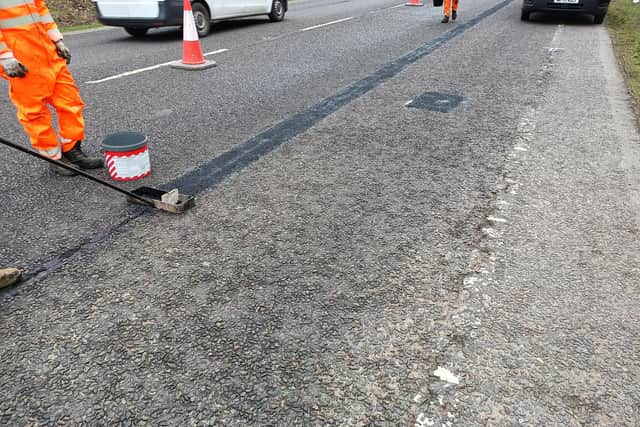Could potholes in Leighton Buzzard soon be a thing of the past? Council trials new solution - using old HGV tyres
and live on Freeview channel 276
Old HGV tyres could be the answer to solving the ever constant pothole problem in Central Bedfordshire.
The council has been using a new technique that speeds up pothole repairs, is more cost effective and eco-friendly and uses the rubber waste from end-of-life HGV tyres.
Advertisement
Advertisement
The innovative technique uses rubber-modified stone-mastic asphalt which is kept warm on the back of the vehicle so can be used straight into the pothole. Because of the rubber content, it’s sticky and easy to apply when heated. Once poured into a pothole, it spreads beyond the edges, adhering to the surface and creating a waterproof seal, flowing into cracks and voids. As the work is quicker this also shortens the time needed for road closures.


With nine end-of-life HGV tyres to every tonne of material laid the carbon footprint is typically 8% lower than traditional asphalt and helps with recycling old tyres.
The materials can be used to repair a wide variety of surface defects in roads and pavements including potholes, cracking and the surrounds of manholes and gullies.
CBC and its highway provider Milestone are using the new technique on repairs to damaged sections of road across several locations in the south of Central Bedfordshire.
Advertisement
Advertisement
This financial year, CBC used traditional techniques to repair potholes, fixing more than 4,500 potholes, that’s an increase of over 1,500 compared to the previous year. If the new mastic asphalt repairs prove successful, this could mean more repairs than ever before are a real possibility according to the council.
Cllr Simon Ford, Executive Member for Highways said: “We are always seeking ways to make public money go as far as possible and this new approach does just that. This solution delivers increased productivity, reduces disruption on the network, and lowers our carbon footprint.
“This builds upon the significant surface dressing programme that we have successfully completed and will help us improve the condition of our roads. As this technique has been successful, we’ll be using this on further roads across Central Bedfordshire.”